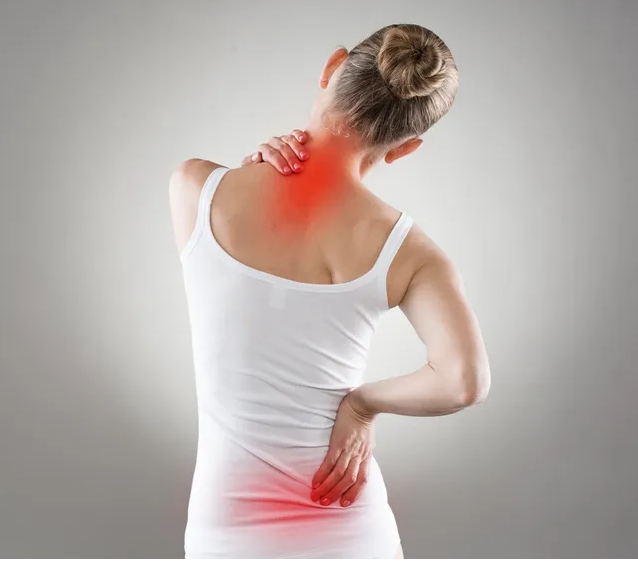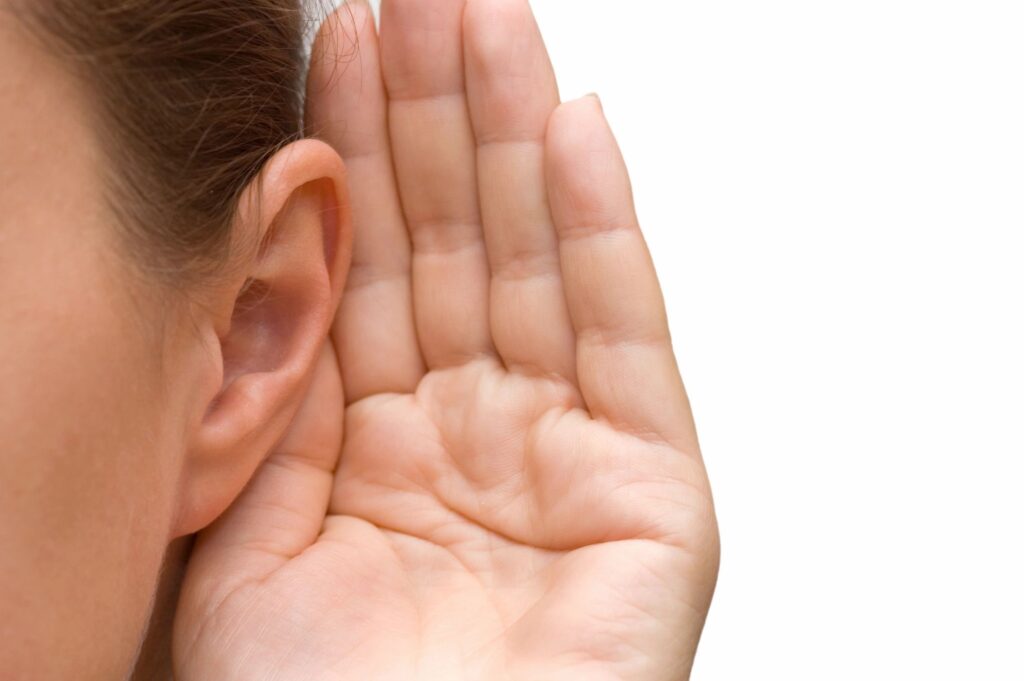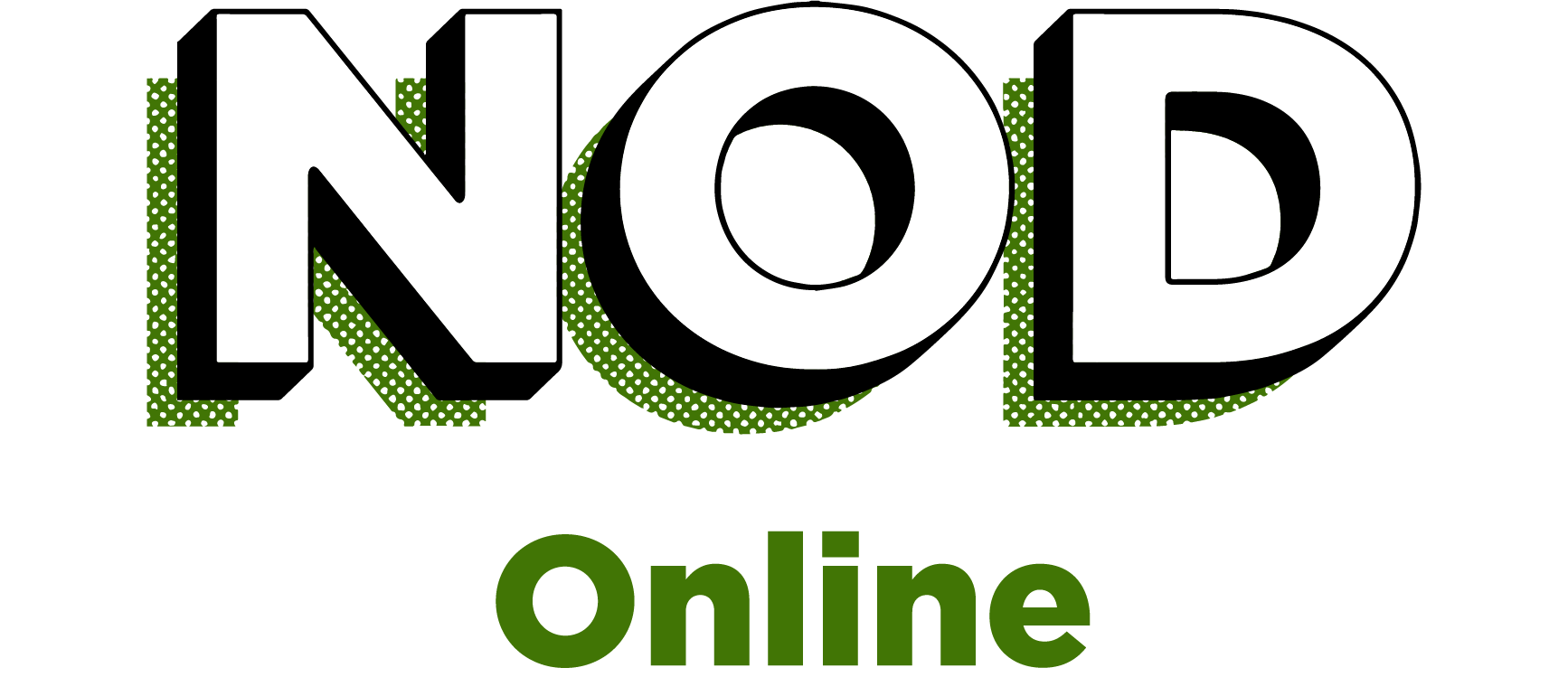
Medical Conditions
In the United States, millions of people are affected by various medical conditions that can impact their health and quality of life. Let’s take a look at some of the most common medical conditions in the U.S.
High Blood Pressure (Hypertension)
High blood pressure, or hypertension, is a common medical condition that affects millions of people in the U.S. Often referred to as “the silent killer,” it can go unnoticed for a long time as there are typically no overt symptoms. However, in severe cases, individuals may experience headaches, dizziness, shortness of breath, and chest pain.
Causes of Hypertension
The causes of hypertension can vary, but some common factors include:
- An unhealthy diet
- Lack of physical activity
- Smoking
- Excessive alcohol consumption
- Family history of high blood pressure
Additionally, certain medical conditions such as obesity, kidney disease, and thyroid problems can also contribute to hypertension.
Treatment for Hypertension
Managing high blood pressure involves a combination of lifestyle changes and medications. Adopting a balanced diet, low in salt and saturated fats, can help control blood pressure. Regular exercise, such as brisk walking or swimming, is also beneficial for heart health.
Stress management techniques, like yoga or meditation, can also be useful in reducing hypertension. In cases where lifestyle changes are not sufficient, doctors may prescribe medications to help lower blood pressure.
Type 2 Diabetes
Type 2 diabetes is a prevalent medical condition that occurs when the body becomes insulin resistant, meaning it can’t effectively use insulin to regulate blood sugar levels. This leads to an accumulation of sugar in the blood, which can cause various health problems.
Symptoms of Type 2 Diabetes
Symptoms of type 2 diabetes include frequent urination, thirst, and unexplained weight loss. Over time, if left untreated, diabetes can lead to serious complications. These include heart disease, kidney damage, and nerve problems.
Causes of Type 2 Diabetes
Symptoms of type 2 diabetes include:
- Frequent urination
- Excessive thirst
- Fatigue
- Unexplained weight loss
Over time, if left untreated, diabetes can lead to serious complications like heart disease, kidney damage, and nerve problems.
Treatment for Type 2 Diabetes
Treatment for type 2 diabetes revolves around managing blood sugar levels through lifestyle changes and medication. A healthy diet with a focus on whole grains, fruits, vegetables, and lean proteins can help control blood sugar levels.
Regular exercise can improve insulin sensitivity and aid in weight management. In some cases, doctors may prescribe oral medications or insulin injections to help regulate blood sugar levels.
Asthma
Asthma is a chronic respiratory condition that affects the airways, causing them to become inflamed and narrow. This can lead to symptoms like wheezing, coughing, shortness of breath, and chest tightness.
Causes and Triggers of Asthma
Common triggers for asthma attacks include allergens (e.g., pollen, pet dander, dust mites), respiratory infections, cold air, exercise, and exposure to irritants like smoke or strong odors.
Treatment for Asthma
Treatment for asthma aims to control and prevent symptoms. Inhalers are the most common form of treatment and come in two types. The first is quick-relief inhalers that provide immediate relief during an asthma attack. The second is long-term control inhalers to manage inflammation and prevent future attacks.
Identifying and avoiding triggers, when possible, can also be helpful in managing asthma.
Aches / Pains

Aches and pains are common discomforts experienced by people of all ages, often resulting from various causes. While they are usually temporary and harmless, persistent or severe pain may indicate an underlying medical condition that requires attention. In this section, we will explore some of the most common types of aches and pains.
Headaches
Headaches are one of the most prevalent types of pain experienced by individuals. They can vary in intensity and often affect the front, sides, or back of the head. Some common types of headaches include tension headaches, migraines, and sinus headaches.
Causes
Tension headaches often result from stress, poor posture, or eye strain. Migraines can be triggered by factors like hormonal changes, certain foods, or sensory stimuli. Sinus headaches are often caused by sinus infections or allergies.
Treatment
Over-the-counter pain relievers such as acetaminophen or ibuprofen can help manage mild headaches. For more severe migraines, prescription medications may be necessary. Relaxation techniques, stress management, and maintaining good posture can help prevent tension headaches.
Back Pain
Back pain is another common complaint, affecting people of all ages and lifestyles. It can be localized in specific areas or spread across the entire back.
Causes
Back pain can be caused by muscle strain, poor posture, lifting heavy objects incorrectly, or even long hours of sitting. Medical conditions such as herniated discs or spinal stenosis can also contribute to back pain.
Treatment
Resting the affected area, applying heat or cold packs, and gentle stretching exercises can help alleviate mild back pain. Maintaining a proper posture and practicing core-strengthening exercises can prevent recurring back problems. In more severe cases, physical therapy or medical intervention may be necessary.
Joint Pain
Joint pain refers to discomfort in the body’s joints, which can hinder movement and impact daily activities. Research shows that most Americans over the age of 50 years suffer from some type of joint pain.
Causes
Joint pain can result from injuries, overuse, or medical conditions such as osteoarthritis, rheumatoid arthritis, or gout. In some cases, joint pain may also be associated with other inflammatory joint disorders that require appropriate diagnosis and treatment.
Treatment
Resting the affected joint, applying ice packs, and taking over-the-counter anti-inflammatory medications can provide relief for mild joint pain.
Regular low-impact exercise, such as swimming or walking, can help maintain joint mobility. In cases of chronic joint pain, medical evaluation, and prescription medications may be needed.
Muscle Pain
Muscle pain, also known as myalgia, is a common discomfort often experienced after physical activity or due to muscle tension. Let’s take a closer look at its causes and treatment options.
Causes
Muscle pain can occur from overexertion during exercise or muscle injuries resulting from accidents or strain. Additionally, it may be associated with conditions like fibromyalgia. This is a chronic disorder characterized by widespread muscle pain and tenderness.
Treatment
Resting the affected muscles, gentle stretching, and applying heat or cold packs can help alleviate muscle pain. Avoiding strenuous activities during recovery and staying well-hydrated can also aid in the healing process.
Toothaches
Toothaches can be intense and distressing, often indicating dental issues that require immediate attention and care. Millions of Americans experience toothaches every year.
Causes
Toothaches may result from various dental problems. These include dental cavities, infections, gum disease, or dental trauma caused by injuries or accidents. It can also arise from poor dental care practices.
Treatment
Over-the-counter pain relievers can provide temporary relief for mild toothaches. However, it’s crucial to seek prompt dental care to identify and address the underlying cause of the pain.
A visit to the dentist will help diagnose the issue and determine the most appropriate treatment. This could include:
- Dental fillings
- Antibiotics for infections
- Other dental procedures as necessary
Ignoring toothaches or delaying treatment may lead to worsening conditions and potential complications. This emphasizes the importance of timely dental intervention.
Anxiety / Stress

Anxiety and stress are common emotional experiences that affect many people in their daily lives. It should be said that occasional stress is a normal response to challenges. However, prolonged or intense feelings of anxiety and stress can negatively impact mental health and well-being.
Let’s take a closer look at anxiety and stress in this section.
Anxiety
Anxiety refers to a feeling of unease, worry, or fear about future events or situations. While it is a normal reaction to certain circumstances, excessive anxiety can lead to anxiety disorders. This can affect how individuals function in their personal and professional lives.
Causes
Anxiety can be triggered by various factors, such as:
- Life changes
- Excessive workload
- Financial worries
- Health concerns
- Traumatic events
Understanding the underlying causes can aid in developing personalized coping strategies.
Symptoms
Common symptoms of anxiety may include:
- Restlessness
- Irritability
- Difficulty concentrating
- Muscle tension
- Sleep disturbances
It’s important to recognize these signs of anxiety. This is because they can significantly impact daily functioning and overall well-being.
Stress
Stress is a response to demands or pressures that individuals experience in their environment. While some stress can be motivating and productive, chronic stress can be detrimental to physical and mental health.
Causes
Stress can arise from various sources, making it a natural part of life’s ups and downs. These include:
- Work-related pressures
- Relationship issues
- Financial challenges
- Major life events
- Constant exposure to negative stimuli
Recognizing the various sources of stress in our lives can help us better understand and address these stressors.
Symptoms
Symptoms of stress may manifest physically, emotionally, or behaviorally. They can include:
- Headaches
- Fatigue
- Mood swings
- Overeating
- Withdrawal from social activities
Again, recognizing and understanding these diverse symptoms can help individuals take proactive steps to address stress.
Management
Both anxiety and stress can benefit from relaxation techniques, lifestyle adjustments, and seeking support. Managing anxiety may also involve cognitive behavioral therapy (CBT) or other interventions tailored to address specific anxiety-related concerns.
Anxiety vs. Stress
While anxiety and stress share some common features, they are distinct emotional responses, each presenting unique characteristics and triggers. Let’s take a look at their differences here.
Causes
Anxiety can be triggered by various stressors, but it may also arise from irrational fears or concerns about events that have not yet occurred.
Stress, on the other hand, is a response to immediate pressures or demands in one’s environment. It is often linked to specific situations or events.
Symptoms
While symptoms of anxiety and stress can overlap, anxiety is more focused on mental unease and emotional turmoil. On the other hand, stress tends to have a broader impact on physical and mental well-being.
Anxiety symptoms may include excessive worry, restlessness, and difficulty concentrating. Stress symptoms may manifest physically as headaches, muscle tension, or fatigue.
Effects
Anxiety can lead to excessive worry and avoidance behaviors, causing individuals to anticipate and avoid potential stressors.
On the other hand, stress can be a reaction to various life events and may lead to a “fight or flight” response. This prepares the body to cope with perceived threats.
Coping with Anxiety and Stress
Learning to cope with anxiety and stress is essential for maintaining mental and emotional well-being. Let’s share some practice tips and advice here.
Self-Care
Engage in self-care practices, such as regular exercise, sufficient sleep, and maintaining a healthy diet, to build resilience and reduce vulnerability to anxiety and stress.
Time Management
Set realistic goals, prioritize tasks, and avoid overcommitting yourself to prevent feeling overwhelmed by stressors. If you are feeling stressed, it’s okay to slow down and prioritize your well-being.
Relaxation Techniques
Practice relaxation techniques, such as deep breathing exercises, progressive muscle relaxation, or guided meditation, to calm the mind and body. Yoga is a great way to unwind and relax both the mind and body.
Seek Support
Don’t hesitate to seek support from friends, family, or mental health professionals. Talking about your feelings and concerns can be therapeutic and reassuring. We’re sure you will feel better after sharing your problems.
Limit Stressors
It also helps to identify and minimize sources of stress whenever possible. This may involve setting boundaries, delegating tasks, or seeking assistance with challenging responsibilities.
Hair Loss and DHT

Hair loss, a common concern for many individuals, can be attributed to various factors. These include genetics, hormonal changes, and the role of dihydrotestosterone (DHT). In this section, we will explore the causes of hair loss, the role of DHT in this process, and potential ways to address and manage hair loss effectively.
Causes of Hair Loss
Hair loss can occur due to a range of factors. The most common is androgenetic alopecia, also known as male or female pattern baldness. This type of hair loss is primarily influenced by genetics and hormonal changes.
Other causes of hair loss may include certain medical conditions, medications, stress, nutritional deficiencies, and improper hair care practices.
The Role of DHT in Hair Loss
DHT is a hormone derived from testosterone through the action of an enzyme called 5-alpha-reductase. While DHT plays a crucial role in the development of male characteristics during puberty, it can also have a negative impact on hair follicles.
In individuals with a genetic predisposition to androgenetic alopecia, hair follicles on the scalp may become sensitive to DHT. When DHT binds to specific receptors on these follicles, it can cause them to shrink over time. This results in finer and shorter hair growth.
Eventually, affected hair follicles may stop producing new hair, leading to noticeable hair thinning or baldness.
Managing Hair Loss
Some forms of hair loss, like androgenetic alopecia, cannot be completely reversed. With others, there are various approaches to manage and slow down the process. Let’s take a closer look at some of these approaches.
Medications
FDA-approved medications, such as minoxidil and finasteride, have shown effectiveness in managing hair loss. Minoxidil is a topical solution that can promote hair growth and slow down hair thinning. Finasteride, meanwhile, is an oral medication that helps block the conversion of testosterone to DHT.
Hair Care
Proper hair care is essential for maintaining healthy and strong hair, and it can play a significant role in reducing hair damage and breakage. Here are some essential hair care tips to promote optimal hair health:
- Use a mild shampoo
- Avoiding washing your hair too frequently
- Condition your hair regularly
- Avoid heat styling
- Protect your hair from UV rays
- Trim your hair regularly (to avoid split ends and breakage)
It can help to speak to a medical professional if you are unsure how to properly protect your hair.
Stress Management
High levels of stress can contribute to hair loss. Engaging in stress-reducing activities, such as exercise, meditation, or spending time in nature, can help manage stress and its impact on hair health.
Hair Transplants
In cases of advanced hair loss, hair transplant procedures can be considered to restore hair in balding areas. This involves moving hair follicles from areas of the scalp with healthy hair growth to areas with hair loss.
Lifestyle Changes
In addition to medications and hair care practices, certain lifestyle changes can play a crucial role in managing hair loss and promoting hair health.
One of these is to ensure you have a balanced diet. It should be rich in vitamins, minerals, and protein, as these nutrients are essential for healthy hair. Foods like leafy greens, nuts, eggs, fish, and fruits are beneficial for promoting strong and shiny hair.
Regular exercise is also crucial. Exercise improves blood circulation, which can help nourish hair follicles. Incorporating regular physical activity into your routine can contribute to healthier hair growth.
Adequate sleep is equally essential for hair health and overall vitality. Aim for 7-9 hours of quality sleep each night to support your body’s natural healing processes, including hair growth.
Hearing loss

Hearing loss is a prevalent sensory impairment that affects millions of people worldwide. In this section, we will explore the causes and types of hearing loss, its impact on daily life, and potential solutions for managing and improving hearing health.
Causes and Types of Hearing Loss
Hearing loss can result from various factors and can be classified into different types. These include the following.
Sensorineural Hearing Loss
This type of hearing loss occurs when there is damage to the inner ear or the auditory nerve, preventing sound signals from reaching the brain. It can be caused by aging, exposure to loud noise, certain medications, or genetic factors.
Conductive Hearing Loss
Conductive hearing loss stems from problems in the outer or middle ear, hindering sound conduction to the inner ear. Common causes include ear infections, wax buildup, fluid accumulation, or abnormalities in the ear’s structure.
Mixed Hearing Loss
Mixed hearing loss is a combination of both sensorineural and conductive hearing loss. It involves issues in both the inner/middle ear and auditory nerve.
Impact on Daily Life
Hearing loss can significantly impact communication and daily interactions, leading to various challenges. Let’s highlight some of the common challenges associated with hearing loss.
Difficulty Understanding Speech
People with hearing loss may have difficulty following conversations, especially in noisy environments or when multiple people are speaking at once. This can lead to misunderstandings, confusion, and frustration during social gatherings or even simple one-on-one interactions.
Social Isolation
Struggling to hear can lead to social withdrawal. Individuals may avoid gatherings or interactions due to communication difficulties. Feeling left out or unable to fully participate in conversations can result in feelings of loneliness and isolation, affecting overall well-being.
Emotional Impact
Hearing loss can lead to a range of emotions, including frustration, embarrassment, or anxiety. The struggle to communicate effectively can erode self-confidence and lead to feelings of inadequacy. This can impact personal relationships and self-esteem.
Managing Hearing Loss
While hearing loss cannot always be fully restored, there are effective ways to manage and improve hearing health. Here are some common options.
Hearing Aids
Hearing aids are small electronic devices that amplify sounds. They make sounds clearer and more audible for individuals with hearing loss.
Cochlear Implants
Cochlear implants are surgically implanted devices that directly stimulate the auditory nerve. They bypass damaged parts of the inner ear to restore hearing in severe cases of sensorineural hearing loss.
Communication Strategies
For individuals with hearing loss, adopting effective communication strategies can greatly enhance understanding and facilitate better interactions with others. Some of these strategies include:
- Reduce background noise
- Ask for repetition or clarification if necessary
- Use visual aids
- Use assistive listening devices
- Learn basic sign language
- Regularly update hearing devices
By incorporating these communication strategies into daily interactions, individuals with hearing loss can better navigate social situations.
Preventing Hearing Loss
Protecting your hearing from potential damage is essential to maintaining good hearing health throughout life. Here are some practical steps to prevent hearing loss.
Use Ear Protection
When exposed to loud noises, such as at concerts, sporting events, or in noisy work environments, wear earplugs or earmuffs. These will shield your ears from harmful sound levels.
Limit Headphone Volume
Avoid listening to music or podcasts at high volumes through headphones or earbuds. Prolonged exposure to loud sounds directly into the ear can lead to hearing damage.
Maintain Ear Hygiene
Practice proper ear hygiene to prevent ear infections and wax buildup, which can contribute to conductive hearing loss. Be sure to also avoid inserting objects into the ear canal.
Turn Down the Volume
Be mindful of the volume levels when watching television or listening to music in your car or at home. Keep the volume at a reasonable and comfortable level to protect your hearing.
Like this blog post on aches and pain, anxiety, DHT, hair loss, medical conditions, stress? Be sure to check out our other informative articles on a wide range of interesting topics. Thanks for reading!
